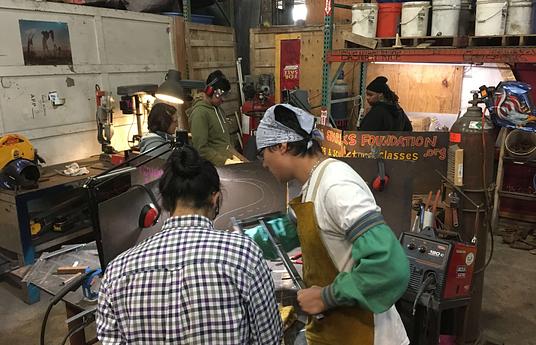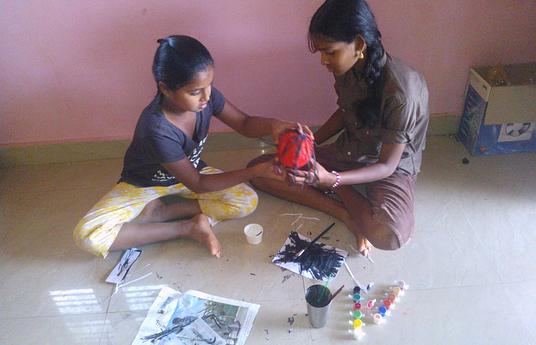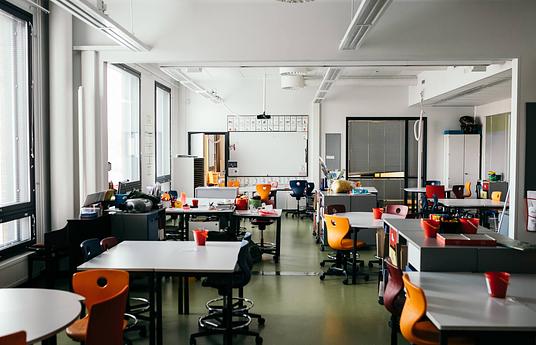Big Picture Learning addresses a changing world view that schools should be more attuned to their students' interests and passions, rather than forcing a standardized curriculum on them that doesn’t cater for their individualities.
This is an issue that has particular pertinence at the moment, as high school student engagement level is at an all time low. This is in part due to the fast developments happening in the world, which education is failing to keep up with. This creates a disconnect between the real lives of the students and what they are experiencing in school.
Kristiina Kumpulainen, Professor of Pedagogy at the University of Helsinki, explains this phenomenon, ‘Society and the demands of the workforce are changing at a rapid rate as well as our perception of what to teach children and what they need to know to survive. Additionally, the world of children and young people outside of schools has changed, and so the school environment, teaching methods and the content aren’t relatable or inspiring to them any longer which creates motivational problems.’
Big Picture Learning sees personalization as the remedy to this issue.
Personalization means that each student has their learning styles, interests and passions catered for. Instead of being jammed into a curriculum and classroom that doesn’t work for them, they get the freedom to study what they love in a way that makes sense for them.
Big Picture Learning makes personalized education more manageable by breaking the students up into small groups of fifteen students...
"
This can be an incredibly difficult task, considering the pressure many schools around the world are under. Growing class sizes, teacher shortages, and under-funding can be obstacles to implementing personalization in education.
Big Picture Learning overcomes this overwhelming feeling by breaking down education to its lowest common denominator, focusing on one student at a time. They see this as the most effective way of reinvigorating education. By focusing on the single student, figuring out their interests and passions, a high-level rigour naturally follows. Therefore, if you do this with every student, the whole school eventually becomes made-up of individuals who are engaged, passionate and developing high-quality skills in their chosen areas.
Check out their short video, explaining how it works:
Big Picture Learning makes personalized education more manageable by breaking the students up into small groups of fifteen students, called an advisory. Each advisory is supported and lead by a teacher (their advisor) who helps the student to discover their own interests, figure out how they learn, and what it is that motivates them.
Advisors and teachers can expose their students to other interests and skills – once they understand how a particular student works – opening their eyes to a whole side of themselves they may not have previously been aware of.
This style of education not only increases engagement and motivation for all students, but it specifically helps those with different learning difficulties, such as dyslexia, who otherwise find standardized education ineffective.
Internships are also an important part of the project. The teacher works with the student to arrange opportunities that suit their interests and could help them on their way after school to find a fulfilling career. Having real-world knowledge again increases motivation as the student can see how what they’re learning in school links to real life.
‘We should be making sure that students know how subjects relate to industry,’ says Kerrine Bryan, founder of Butterfly Books. ‘What they are learning at school relates to real life things, and knowing that helps them to make important decisions, such as what further education subjects they want to study or what skills they want to go into.’
Big Picture Learning sees real-life contact as being crucial for motivation. Teachers help their assigned advisory members to get internships in their chosen fields of interest, helping them to stay motivated and to actualize where their careers after school could take them.
The project aims to get students learning outside of school twice a week, where they meet and work with professionals and organisations that align with each student’s personal interests. The student’s individual learning plan is reviewed four times a year with their parents and advisors, and is used to manage and facilitate the learning that happens outside of school. In the learning plan, the academic side of school is brought into the experiences they’ve had with exterior organisations – always bringing the outside learning back to school projects.
Going past personalization to linking the schools with industry is what makes Big Picture Learning so innovative. Every student is treated as an individual with their own set of passions and capabilities, and similarly each student is treated as such out in their communities, not just in school.
Even though Big Picture Learning works on a whole school level, teachers and headteachers in standardized schools can implement similar techniques in their own classrooms. Talks by professionals, establishing work experience placements and having one-on-one sessions between pupils and teachers to help them figure out their passions and interests can all be woven into existing school structures. Through following Big Picture Learning's example, we can make education a relevant and supportive environment for every student.
 Teachers organise internships to help motivate students to work towards a rewarding career.
Teachers organise internships to help motivate students to work towards a rewarding career. Real-world learning and passion projects are an important part of Big Picture Learning's approach.
Real-world learning and passion projects are an important part of Big Picture Learning's approach.

